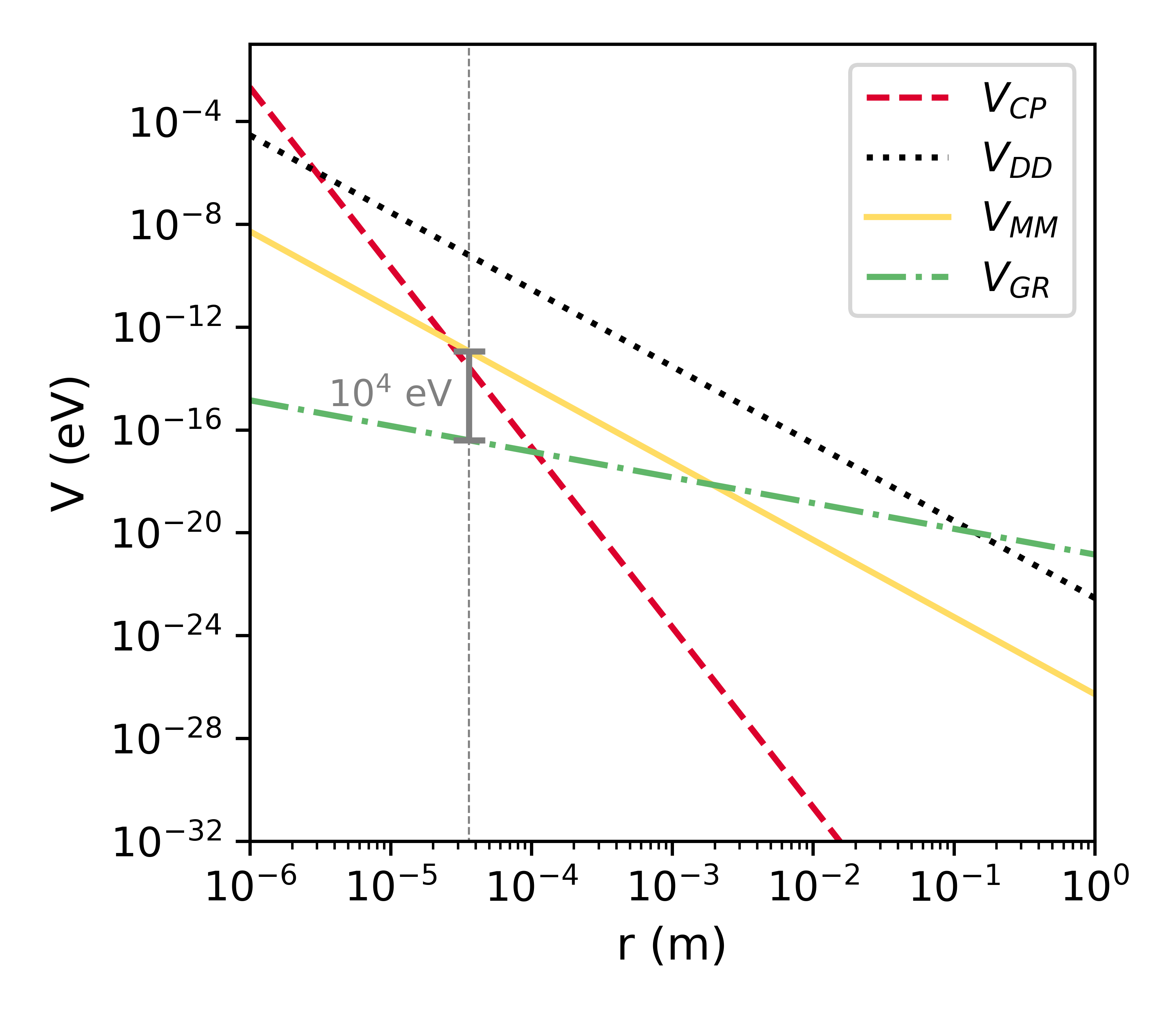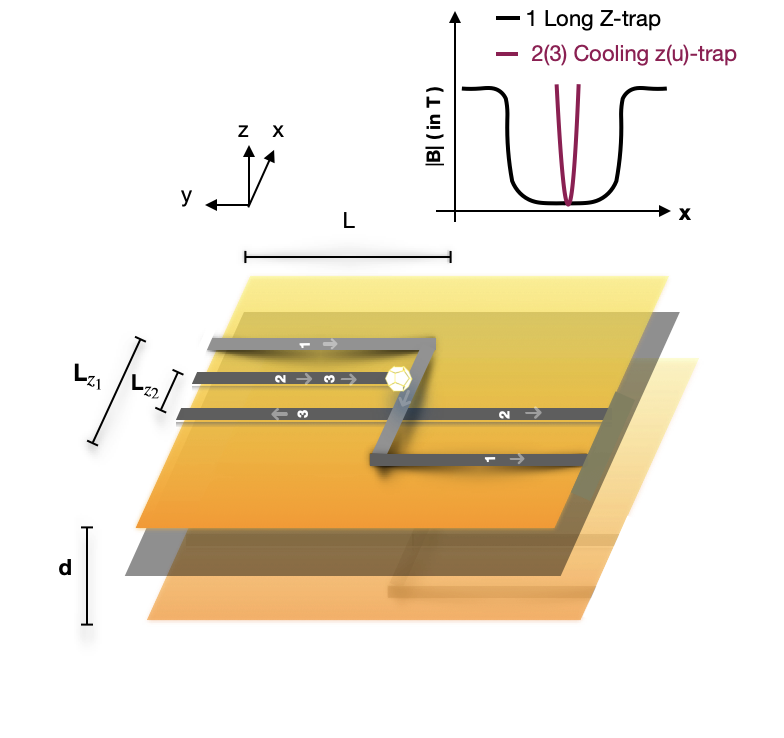Diamagnetic micro-chip traps for levitated nanoparticle entanglement experiments (2411.02325v1)
Abstract: The Quantum Gravity Mediated Entanglement (QGEM) protocol offers a novel method to probe the quantumness of gravitational interactions at non-relativistic scales. This protocol leverages the Stern-Gerlach effect to create $\mathcal{O}(\sim \mu m)$ spatial superpositions of two nanodiamonds (mass $\sim 10{-15}$ kg) with NV spins, which are then allowed to interact and become entangled solely through the gravitational interaction. Since electromagnetic interactions such as Casimir-Polder and dipole-dipole interactions dominate at this scale, screening them to ensure the masses interact exclusively via gravity is crucial. In this paper, we propose using magnetic traps based on micro-fabricated wires, which provide strong gradients with relatively modest magnetic fields to trap nanoparticles for interferometric entanglement experiments. The design consists of a small trap to cool the center-of-mass motion of the nanodiamonds and a long trap with a weak direction suitable for creating macroscopic superpositions. In contrast to permanent-magnet-based long traps, the micro-fabricated wire-based approach allows fast switching of the magnetic trapping and state manipulation potentials and permits integrated superconducting shielding, which can screen both electrostatic and magnetic interactions between nanodiamonds in a gravitational entanglement experiment. The setup also provides a possible platform for other tests of quantum coherence in macroscopic systems and searches for novel short-range forces.
Paper Prompts
Sign up for free to create and run prompts on this paper using GPT-5.
Top Community Prompts
Collections
Sign up for free to add this paper to one or more collections.



